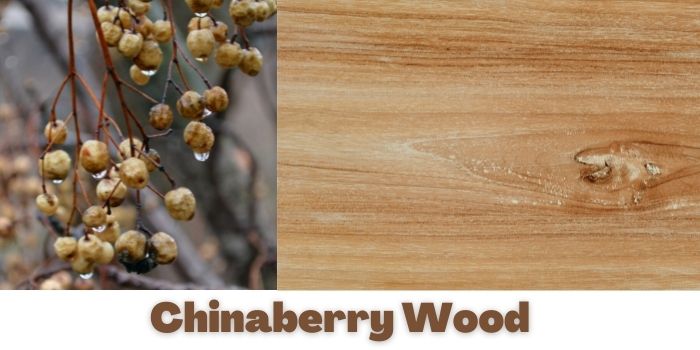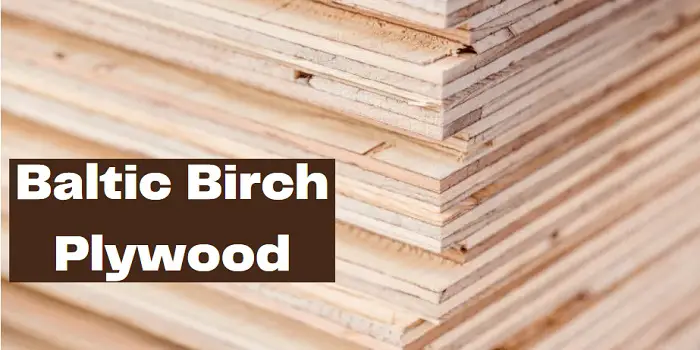
Chinaberry Wood originates in Southeast Asia, Oceana, and Australia. However, it is also grown in many areas around the world for local use.
A typical Chinaberry tree may grow up to 50’ tall and have a trunk diameter of up to 2’ in circumference.
Chinaberry Wood
| Scientific Name: | Melia azedarach |
| Tree Size: | 30-50 ft (9-15 m) tall 1-2 ft (.3-.6 m) trunk diameter |
| Janka Hardness: | 990 lbf (4,400 N) |
| Type: | Hardwood |
| Odor: | No smell |
| Specific Gravity (Basic, 12% MC): | .47, .61 |
| Common Uses: | For veneer, carvings, and turning objects |
Appearance
One aspect of the wood which may be unique is that it features no characteristic odor.
Despite this, for those who have sensitive skin and respiratory issues, Chinaberry Wood is known to cause mild allergic reactions.
This may include headaches as well. However, reports of severe reactions are few and far between.
Color
The heartwood has a relatively wide range of colors that may go from a deep brown with a reddish hint up to a light orange that has a pinkish tone. When exposed to light, the color will become darker over time.
The sapwood tends to be light yellow in color and is quite well-defined, which helps separate it from the heartwood.
Texture
The texture of Chinaberry Wood is rather uneven and coarse in nature. However, there is a strong natural luster that is present in the wood.
The grains tend to be straight, although you may find some interlocking grains that cause them to be uneven.
There is no defined state of whether Chinaberry Wood is truly rot-resistant. This is because there are many conflicting reports about its overall strength and resistance to rot.
What is agreed upon is that the wood seems moderately capable of resisting insects. Plus, it does have good, but not spectacular, durability.
Chinaberry Wood Workability
One of the easier woods to work with, Chinaberry Wood is good for beginners because it mostly has straight grains and a moderate density.
This makes it strong enough to hold up but easy enough to use the most common tools. You can sand, glue, plane, and cut the wood with relative ease.
The one issue is that Chinaberry Wood does have rather large pores. The open, grainy finish may mean having to seal the pores if you want a smooth surface.
Of course, for those who want that rustic appearance, you can leave the wood as is. Still, it does pay to add treatments, stains, or paint to the wood to seal up the pores.
What is Chinaberry Wood Used for?
You’ll mostly find Chinaberry Wood used for turned objects, carvings, veneer, and some furniture.
Because it is a relatively easy wood to work with, you’ll often find it used for hobby purposes. This normally means smaller, decorative objects and the like.
Chinaberry Wood is not available as lumber in the commercial sense. It is mostly used by hobbyists and in small-scale projects.
For those living in the US, the wood is generally not imported but instead is normally grown locally.
However, since its introduction into the southeastern areas of the US, it is now considered by many to be an invasive tree.
This wood is not listed as a threatened or endangered species. The pricing for such wood tends to be moderate as well with demand being rather average.

Hi, I am Mark Garner a professional carpenter, woodworker, and DIY painter. I live in the small city of Peoria, Arizona as a semi-retired woodworker. I have started this blog with a simple motive to help you with my wood experience in this sector. If you like to know more about what I love doing and how it all got started, you can check more about me here.




